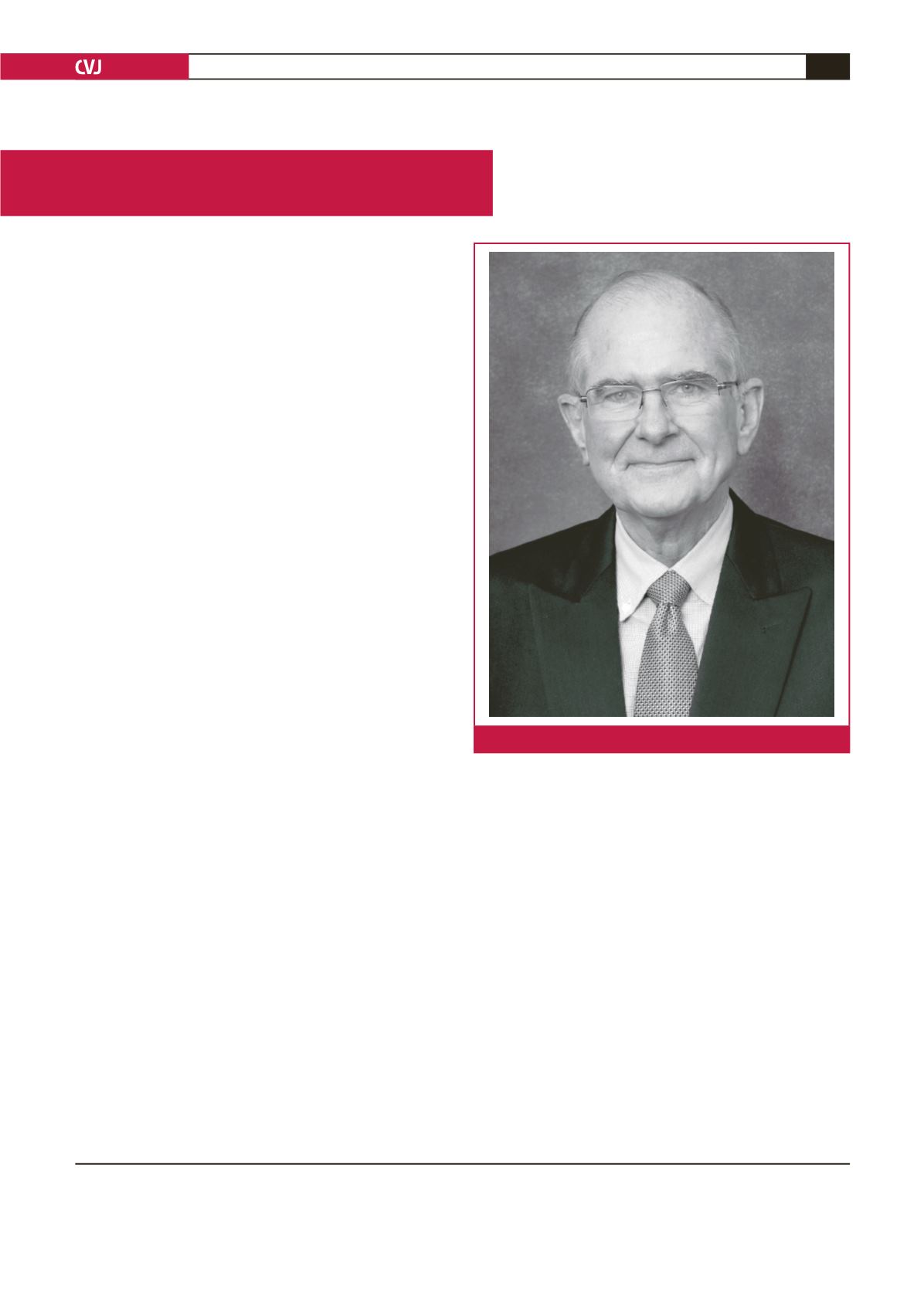

CARDIOVASCULAR JOURNAL OF AFRICA • Volume 29, No 5, September/October 2018
AFRICA
267
It is a great pleasure to invite you as readers to enjoy the content
of this issue of the Journal and to reflect on its impact on our
continent. As always we try to ensure that the articles submitted
and accepted for publication are illustrative of the health-related
issues of the people of the continent and also the efforts of
individuals, organisations and professional societies to resolve
outstanding issues.
Ali and collaborators report on a large echocardiographic
screening programme of school children in Sudan (page 273)
for rheumatic heart disease (RHD). They used hand-held echo
and modifications of the World Heart Federation protocol to
examine children in Khartoum and Darfur. The examinations
were performed by operators with different levels of expertise
and they used different protocols.
Despite criticisms that can be raised on these methodological
aspects, acknowledged by the authors, the results are of
importance. Firstly, RHD remains very common in children
in parts of Africa. Secondly, there is an ‘economic gradient’,
with RHD being more prevalent in areas with poor socio-
economic conditions. Thirdly, surveillance screening such as this
allows for health planners to target programmes for secondary
prevention, which need to be instituted urgently. Lastly and
most importantly, politicians and society as a whole need to
target the improvement of living conditions of marginalised
communities if societal health is to be improved.
The number of children diagnosed with definite RHD
in Darfur poses a huge potential burden for the healthcare
environment of the future. Very few, if any, African countries
have the requisite skilled personnel or financial resources to cope
with this potential future demand.
Bearing in mind that for most patients with chronic RHD,
the only relief of intractable symptoms is valve-replacement
surgery (rarely repair), it is relevant to examine the complications
resulting from necessary anticoagulation of such patients. Kariv
and co-investigators (page 289) examined the very difficult
issue of managing young, pregnant female patients who had
undergone valve-replacement surgery (the majority for RHD).
They conclude ‘Complication rates were high despite centralised
care’.
These results are from a tertiary-level hospital with a
dedicated maternity/obstetric clinic. I have no idea how this
relates to secondary and primary levels of care, but they may
be the best we can achieve. They indicate that young women
with prosthetic valve replacements who are on anticoagulants
such as warfarin are at high risk during pregnancy. The newer
oral anticoagulants are unproven for valve replacement and are
untested in pregnancy.
A personal view, which may well be controversial, has been to
advise young women with RHD to complete their families before
valve-replacement surgery is necessary and then to adopt a form
of effective and life-long contraception that will permit them to
see their children grow and enjoy the benefits of a mother.
Few subjects elicit as much controversy as the influence of
diet on health. Monyeki and colleagues (page 301) report on
the Ellisras study and confirm a concerning high prevalence
of overweight and obesity in a rural community. The future
implications for the over-stretched healthcare sector remain
unresolved.
The Journal is the official journal of PASCAR and is happy
to publish the report (page 331) of the development of the
certificate course in the management of hypertension in Africa.
Pat Commerford
Editor-in-Chief
From the Editor’s Desk
Professor PJ Commerford

















